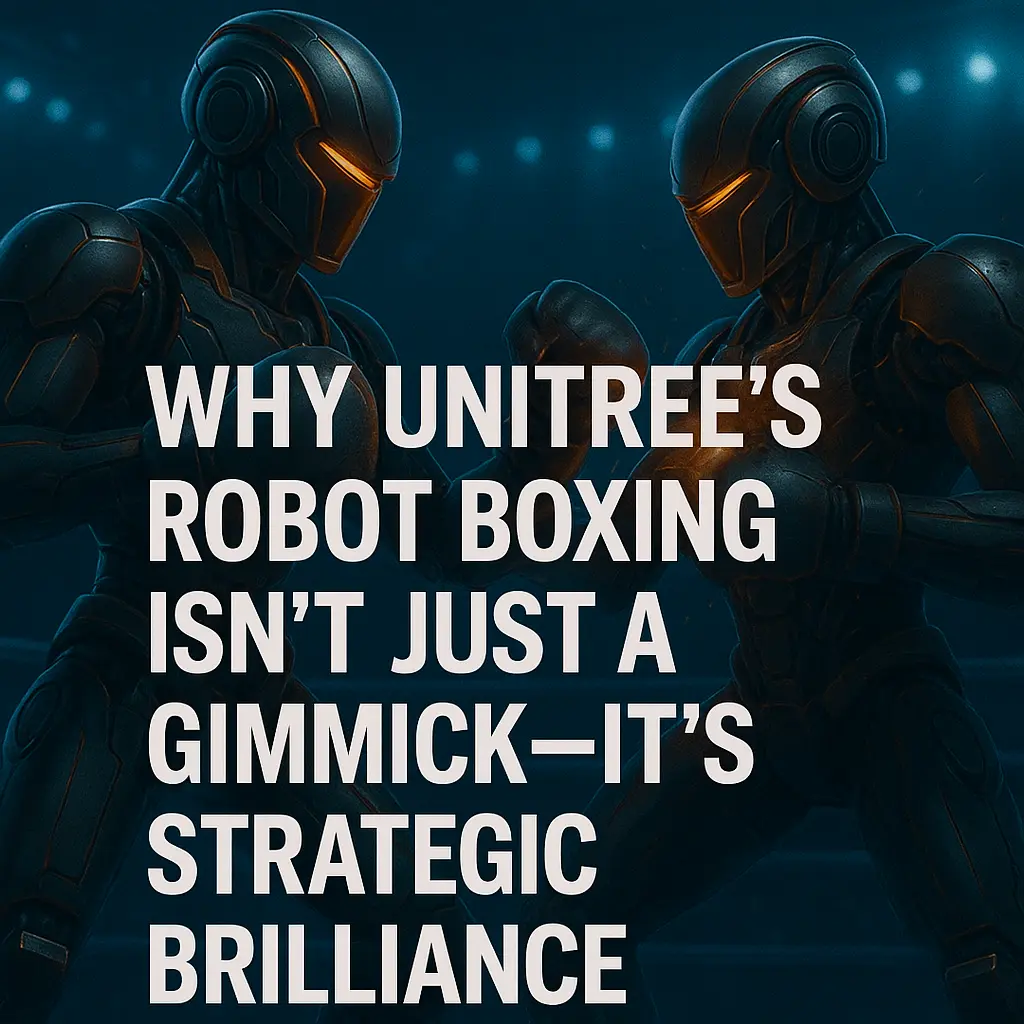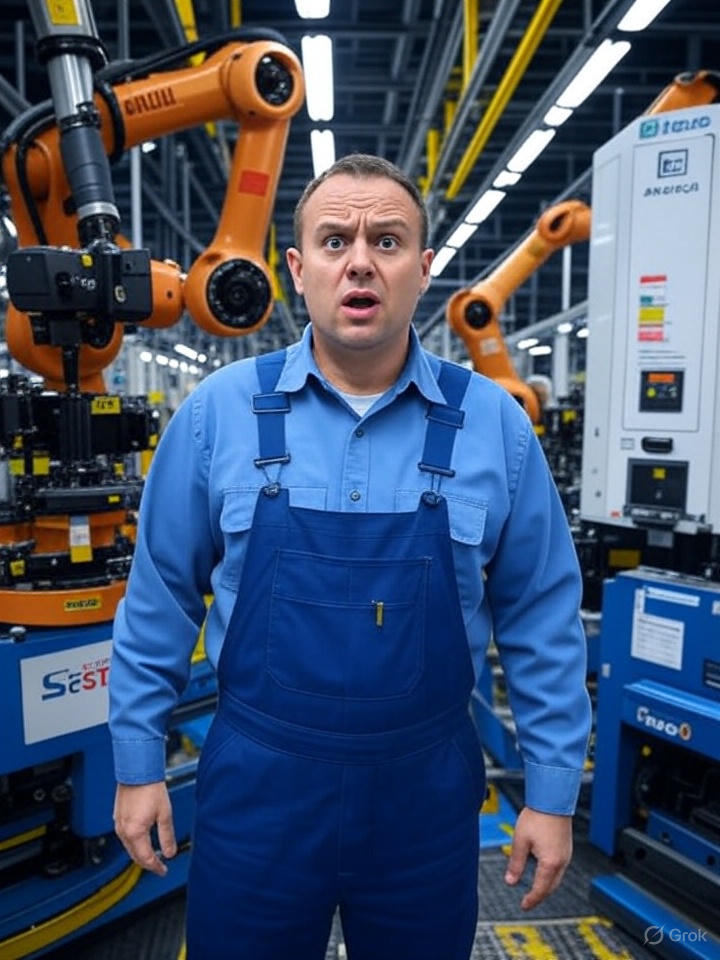Why Unitree’s Robot Boxing Isn’t Just a Gimmick—It’s Strategic Brilliance
Published:

When Unitree launched its robot boxing matches, many in the robotics community saw it as a gimmick, a flashy PR stunt. But to seasoned technologists and business strategists, it’s clear: this is a smart, calculated move with multi-dimensional upside that hits on all fronts: tech, business, and culture. It’s not just a spectacle—it’s a signal.
A Real-World Testing Ground, R&D, Accelerated
Developing legged robots is a notoriously complex challenge. Dynamic locomotion, real-time object avoidance, force feedback, balance recovery—these are not trivial problems. You can simulate walking, balancing, and reacting to disturbances in the lab—but throw two robots into a ring and you expose edge cases no simulation could predict. Every stumble, swing, and recovery helps the Unitree team refine their motion planning, control, and robustness.Traditional lab environments can only simulate so much. But pit two robots against each other in a controlled combat scenario, and suddenly you’re testing your algorithms against unpredictable chaos.
It’s like F1 for robotics: high-stakes, high-speed, and the fastest path to failure—and iteration. Every punch, stumble, and recovery gives Unitree’s engineering team a data-rich opportunity to refine motion planning, stability control, and sensor fusion.
Media Attention and Brand Differentiation
The robotics market is heating up. From Boston Dynamics to Agility to Chinese startups, everyone’s racing to claim leadership in mobile autonomy. But unlike defense contractors or stealthy industrial deployments, Unitree is playing the consumer-friendly, mass-media game.
Boxing robots? It’s instantly viral. It taps into nostalgia (think Rock ‘Em Sock ‘Em Robots), science fiction (Real Steel), and the visceral thrill of human-like machines in competition. Every video is marketing gold—low cost, high yield.
And in a sector often seen as abstract or opaque, this brings relatability and excitement to non-technical audiences: consumers, investors, and policy makers.
Monetization with Minimal Risk
Staging robot fights doesn’t require solving full autonomy or high-level AGI. Unitree can monetize the current generation of hardware and software without overpromising. Whether through event ticketing, merchandise, streaming rights, or licensing the competition format—this is a low-barrier, high-ROI business model. Unitree’s customers are mainly from university and research centers, the move is aligned very well.
Think of it as eSports for embodied AI.
Culture Motivation and Talent Retention
The best engineers want to work on bold, visible projects. The energy inside a robotics lab during competition prep is palpable—fast iteration cycles, tight feedback loops, cross-disciplinary collaboration. You’re not waiting six months to see if your control algorithm works on a warehouse floor. You’re seeing it in action tomorrow, in the ring.
It also makes recruitment easier. What top robotics graduate wouldn’t want to say they trained a champion robot boxer?
Large-scale humanoid or quadruped robot deployment—on construction sites, in elder care, or in military support—is still years away. Remember why I walked away from a $7M robot deal ? The technology is still not ready for real job. But that doesn’t mean companies like Unitree should stay in stealth or wait for the perfect product-market fit.
Robot boxing is smart business. It bridges the gap between R&D and revenue, engages the public imagination, and sharpens the tech. It’s not a distraction—it’s a proving ground.
And in a field where iteration speed and public perception are just as critical as technical milestones, Unitree might have just punched above its weight.
Hey, I am Yong, a seasoned robotics executive with over 20 years of experience spanning robotics, automobile automation, and IoT. My career has evolved from technical roles at leading companies to founding and scaling innovative startups. With a unique fusion of deep technical expertise and strategic vision, I excel at building and leading multinational teams, driving product innovation, and executing transformative solutions that capture global markets.


